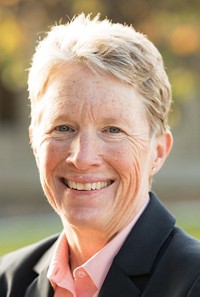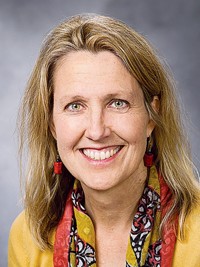Advertisement
Grab your lab coat. Let's get started
Welcome!
Welcome!
Create an account below to get 6 C&EN articles per month, receive newsletters and more - all free.
It seems this is your first time logging in online. Please enter the following information to continue.
As an ACS member you automatically get access to this site. All we need is few more details to create your reading experience.
Not you? Sign in with a different account.
Not you? Sign in with a different account.
ERROR 1
ERROR 1
ERROR 2
ERROR 2
ERROR 2
ERROR 2
ERROR 2
Password and Confirm password must match.
If you have an ACS member number, please enter it here so we can link this account to your membership. (optional)
ERROR 2
ACS values your privacy. By submitting your information, you are gaining access to C&EN and subscribing to our weekly newsletter. We use the information you provide to make your reading experience better, and we will never sell your data to third party members.
Careers
WCC Helps Close The Gender Gap
by Amber Hinkle
December 8, 2008
| A version of this story appeared in
Volume 86, Issue 49
THE WORLD ECONOMIC FORUM recently published its “Global Gender Gap Report 2008.” In this study, global data collected by the United Nations were analyzed, and they revealed that, in general, women around the world are reaching parity with men in terms of education and other developmental criteria. Alarmingly, however, the study also found that women still lag far behind their male peers in reaching executive positions in government or industry.
In fact, the study ranked the U.S. 27th in terms of women having collateral as economic and political decisionmakers. This gap translates directly to the scientific, technical, and engineering (ST&E) workforce in the U.S., as documented in several other recent studies, including C&EN’s annual survey of women serving as company executives and directors (Aug. 11, page 30). The latter survey indicates a decrease, since last year, in the already lagging percentage of women at the top executive levels.
This situation is of major concern, especially in light of the impending talent gap. Thus, many leaders in industry, academia, and the U.S. government are striving to understand how to encourage women to step into the ST&E arena and how to retain them once they’re there. Of course, the first step is to encourage young women to pursue scientific education through access to better resources and precollege preparation, as described in a National Science Foundation-sponsored study published in 2000, “Land of Plenty: Diversity as America’s Competitive Edge in Science, Engineering & Technology.”
The next step is to ensure that those women have the access, skills, and confidence to build a career of their choice, and one for which they have been capably trained. Survey and study results, published by the NSF-sponsored Project Enhance in 2006, show that in both academia and industry, the key areas of potential in terms of retention continue to be work climate, mentoring, recognition, and life balance.
The ACS Women Chemists Committee (WCC) strives to meet some of these needs in several ways. WCC administers awards to students for travel costs to attend scientific meetings and recognizes professional achievements of women chemists. WCC also provides career development opportunities by offering workshops and lectures, publishing advice from successful women in chemistry, and providing travel awards for guest lectureships at universities. WCC also facilitates networking among women chemists and provides information on areas of concern to organizations, including ACS.
In the current economy, WCC is increasing its efforts at the local and regional levels for those members who may not be able to travel to national meetings. If corporations don’t offer their own professional development training, it will be critical for WCC and ACS workshops to be made available where the members are located. Similarly, WCC can provide networking opportunities at local section and regional meeting events when women chemists can’t come to the national meetings to network. This networking in and of itself will become even more important because some chemists may need new jobs due to downsizing.
ABOVE AND BEYOND these measures, however, serious focus needs to be placed on barriers women scientists face in making the leap from mid-level to executive-level leadership. WCC is working with representatives from all ST&E sectors to explore this issue. The committee held a successful roundtable discussion on this topic at the ACS national meeting in Philadelphia in August. One major recommendation that came out of this discussion is to leverage information and experience across professional and scientific organizations.
WCC has already been participating in a collaboration of organizations for women in the sciences to discuss recognition best practices and to support consolidated responses to relevant congressional proposals. Certainly, other synergies can be gained to address professional development, mentoring, networking, and the like. Through a synergistic approach we can be more effective in providing value to women in the chemical sciences.
As both this economic downturn and the great need for talent management in the ST&E workforce puts pressure on the chemical enterprise, we must support women chemists and all ACS members to gain increased value from the society. Creative solutions may include even greater access to resources at the local level and partnering with other organizations.
There is continued need for WCC’s mission of attracting, developing, and promoting women in the chemical sciences. However, this mission has much broader impact, and everyone should consider it important. As concluded in the “Global Gender Gap Report 2008”: “A nation’s competitiveness depends significantly on whether and how it educates and utilizes its female talent. To maximize its competitiveness and development potential, each country should strive for gender equality.”
Views expressed on this page are those of the author and not necessarily those of ACS.






Join the conversation
Contact the reporter
Submit a Letter to the Editor for publication
Engage with us on Twitter